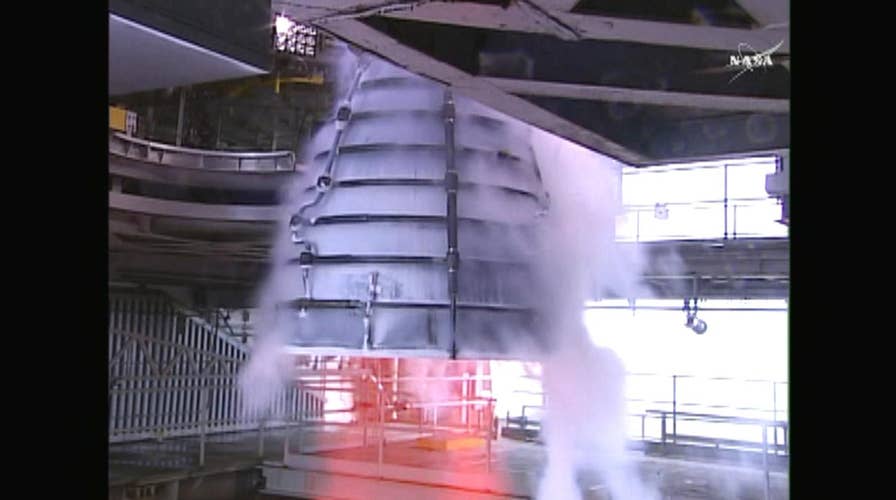Watch NASA test fire engine for world's most powerful rocket
Raw video: Space agency test fires RS-25 rocket engine in Bay St. Louis, Mississippi
NASA engineers tested the RS-25 rocket engine, which will play a crucial role in eventual missions to Mars, on Tuesday.
The test at NASA’s Stennis Space Center in Mississippi is the latest in a series of RS-25 firings.
ASTRONAUT HABITAT FOR MARS MISSIONS COULD BE MADE FROM RECYCLED SPACE SHUTTLE PARTS
The forthcoming Space Launch System (SLS) rocket will be powered by four R2-25 engines firing simultaneously. The RS-25s will provide 2 million pounds of thrust, according to NASA and will work in conjunction with a pair of solid rocket boosters, which provide an additional 6.8 million pounds of thrust.
The first unmanned flight of the heavy-lift SLS - a trip around the moon - was scheduled for 2018, but was recently pushed back to 2019, Space.com reports. A crewed mission was expected to take place in 2021, but it has also been pushed back. NASA said there will be a minimum of 33 months between the unmanned and crewed missions.
NASA UNVEILS 2018 LAUNCH TARGETS FOR PRIVATE SPACESHIPS BUILT BY BOEING, SPACEX
NASA plans to harness SLS to achieve its long-term goal of sending a manned mission to Mars by 2035.
Former Space Shuttle main engines, the RS-25s are modified to meet the demands of SLS with a new controller. “The controller is the key modification to the engines,” explained NASA, in a statement. “The component is often cited as the RS-25 ‘brain’ that allows communication between the engine and the rocket.”
ARE MARS' TROJAN ASTEROIDS PIECES OF THE RED PLANET?
Aerojet Rocketdyne is the RS-25 primary contractor, with Honeywell serving as subcontractor.
Follow James Rogers on Twitter @jamesjrogers

